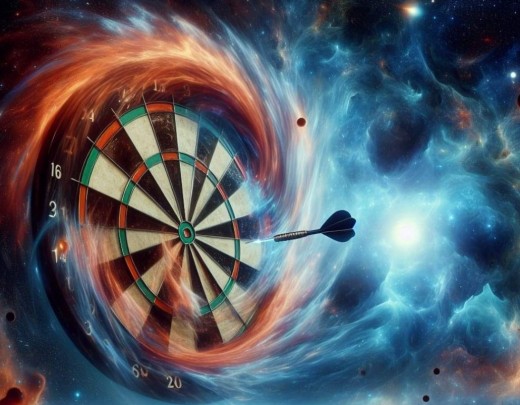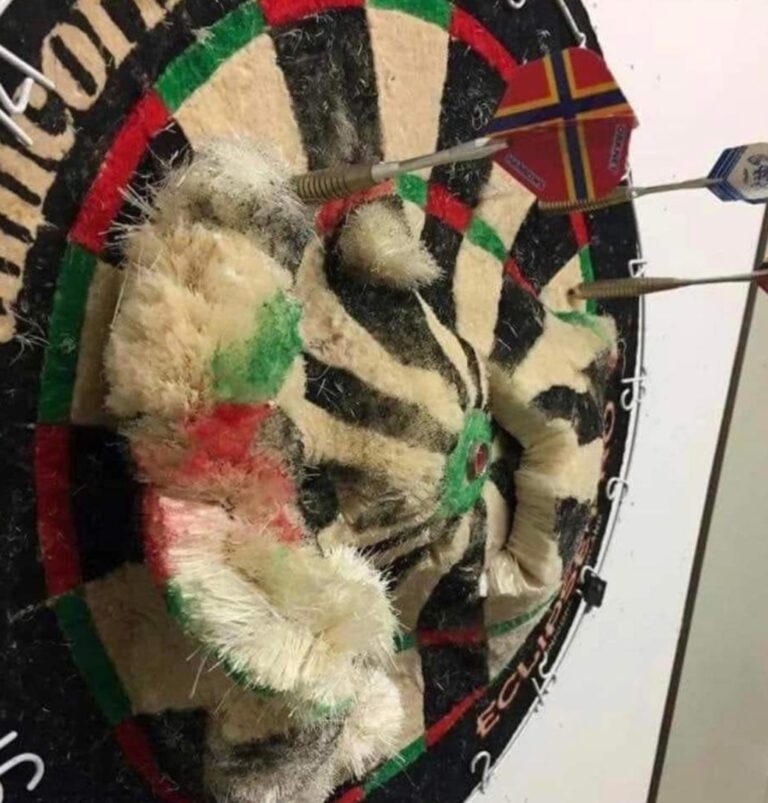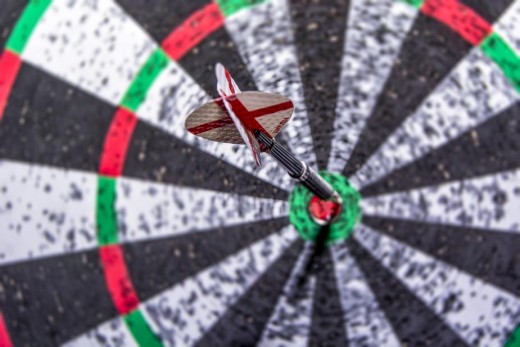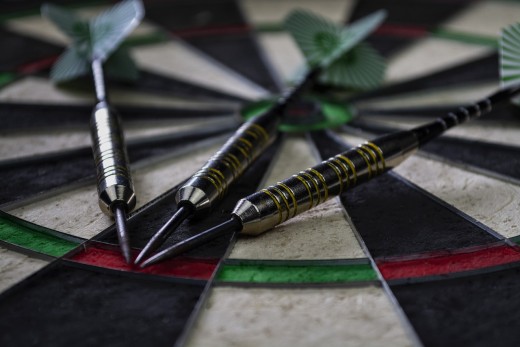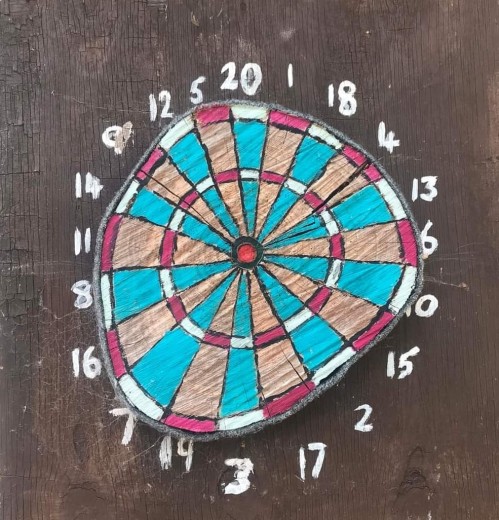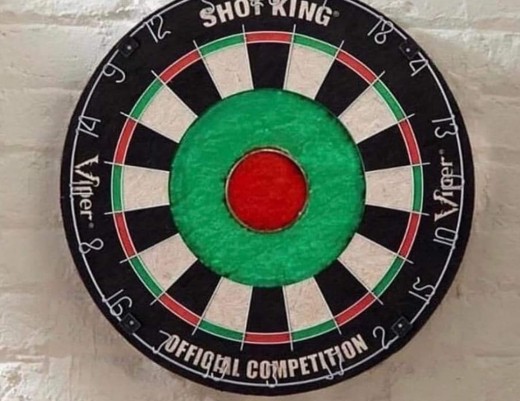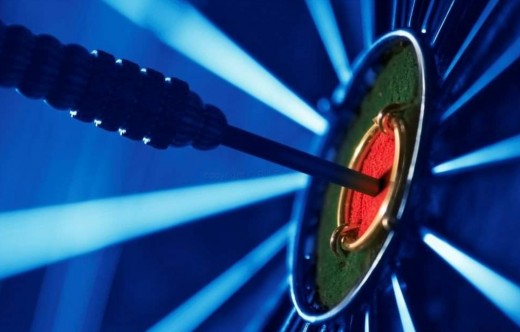Sunday, October 2, 2011
Column 419
Who are we?
In the Year 2000, according to a survey conducted by the American Darts Organization (ADO) the average dart player in this country was 38 years old, so I guess you and I are now about 50. In my case (and the Old Dart Coach’s) this is good news.
Our average household income was $56,564. Today, if we’re still playing darts – and we sure as hell are – our household income is only half this figure, because our spouse has walked out.
Most of us had jobs: trades (19%), technology/telecommunications (16%), professional – including financial services, engineering and sales representatives (13%), government workers (12%) and real estate-related (10%). Fewer of us are employed today, thanks to politicians in Washington.
We owned cars and trucks (43% of us owned a truck). Our preference was for American-made (Fords, Chevrolets, Dodges and Pontiacs). Today we own the same vehicles (we can’t afford new ones because we no longer have our spouse’s income). Our cars and trucks don’t run because we can only get parts for imports and the government owns General Motors.
In the Year 2000 we were Wal-Mart shoppers. For everything from sports clothing and equipment to music and videos the super-retailer was the darters’ top choice to find a good deal. Today we frequent Wal-Mart to snap photos of obese women in halter tops and men in diapers and post them online.
We were becoming tech-savvy. Eighty-eight percent of us had Internet access and we spent about an hour a day online. We used online services for e-mail and work- and school-related activities. Today we use the Internet to hunt for porn.
According to the ADO survey, 82% of us consumed alcohol, mostly beer. Only a quarter of us drank liquor and just 6% (probably women and girlie boys) drank wine. Today 116% percent of us drink beer.
Our fast-food preferences were: Wendy’s (27%), Burger King (22%), Taco Bell (15%) and McDonald’s (7%) and we opted Coke over Pepsi (53% to 43%). Nothing’s changed except that Burger King dethroned its creepy cartoon mascot who bore a striking resemblance to Simon Whitlock.
Starbucks (at 40%) was our preference for coffee, followed by Waffle House (12%) and Denny’s and Cup A Joe (4% each). As Starbucks has greatly expanded operations in the past ten years, with outlets today in airports, malls, hospitals, prisons, day-care centers, nurseries and the Space Shuttle – it is likely they have an even larger share of the darter’s market.
Dunkin’ Donuts was named by 46% as our favorite donut or bagel shop, with Einstein Bagels second (8%), Brueggers Bagels at (5%) and Krispy Kreme (3%). Obviously those who responded to the ADO survey (82% of them being alcohol drinkers) were too drunk to answer this question correctly. Even lab rats and soft-tip dart players know Krispy Kreme is best.
In a difficult to accept as accurate finding, the ADO survey discovered that in 2000 the average American dart player household spent $968 on personal entertainment. Today, at least among the men, this figure is just $84 (since most of our wives have split). However this does not account for the cost of beer, fast food, poker and condoms – in which case the “personal entertainment” figure has increased substantially in ten year’s time. This is another reason why we can’t afford new cars.
Other than darts, drinking and sex, our favorite participation sports were golf (16%), fishing (13%), baseball (10%), billiards and bicycling (8% each) and bowling (7%). Our spectator sports, which 66% of us viewed on ESPN followed by Fox at 21%, were: football and baseball (17% each), basketball and auto racing/NASCAR (9% each) and golf (8%). Not much has changed in the past decade because we still can’t watch darts on television and we’re too preoccupied hunting for porn to watch a pirated match on the Internet. Besides Phil Taylor still always wins.
Other common hobbies included: other sports (71%), sewing and crafts (23%), reading (20), gardening (17%) and photography (11%). Puzzled by the high percentage of sewing and crafts aficionados, I studied the cross-tabs and discovered that, actually, only one person checked this box. Her name was Erik McVay.
Ten years ago, American darts players attended an average of nine tournaments each year. Travel distance was the main factor in determining attendance (70% of respondents listed this as key. Other considerations were cost (48%), event pay-out (44%), work schedule (41%) and the reputation of the host organization (25%).
Our preference in darts was for Accudart (90%), Bottelsen (16%), Unicorn (15%) and Harrow and Black Widows (at 9% each). In the dartboard department Nodor (29%) edged out Accudart and Winmau (at 26% and 23% respectively). With the influence of popular products from Asian suppliers like Monster, L-Style and Cosmo these figures are no doubt changing if they haven’t already.
So as the world has changed in the past decade so have many of the preferences and practices of American darters.
Except one…
Even though it was not part of the 2000 ADO survey, one tendency of darts players has remained constant, at least according to Google Analytics: As in 2000, of the thousands of people – almost all men – who visit this website in the few days after a new column is posted an overwhelming 98.2% do not actually read my column. They click directly to the Double Out shots. As to the women – 100% of them send me hate mail.
Of course, Google Analytics is occasionally prone to error. Therefore I have emailed Katie Harris at the ADO and am counting on her to verify my findings in the next formal ADO survey in the Year 3000.
From the Field,

